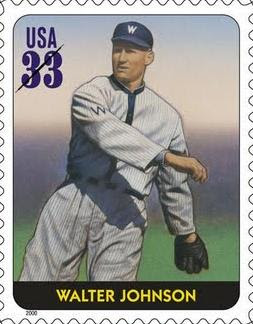
Henry Louis "Lou" Gehrig (June 19, 1903 – June 2, 1941), nicknamed "The Iron Horse" for his durability, was an American Major League Baseball first baseman. He played his entire 17-year baseball career for the New York Yankees (1923–1939). Gehrig set several major league records. He holds the record for most career grand slams (23). Gehrig is chiefly remembered for his prowess as a hitter, his consecutive games-played record and its subsequent longevity, and the pathos of his farewell from baseball at age 36, when he was stricken with amyotrophic lateral sclerosis.
Gehrig was elected to the Baseball Hall of Fame in 1939. In 1969 he was voted the greatest first baseman of all time by the Baseball Writers' Association,[3] and was the leading vote-getter on the Major League Baseball All-Century Team, chosen by fans in 1999.
A native of New York City, he played for the New York Yankees until his career was cut short by amyotrophic lateral sclerosis (ALS), now commonly known in the United States and Canada as Lou Gehrig's disease. Over a 15-season span from 1925 through 1939, he played in 2,130 consecutive games, the streak ending only when Gehrig became disabled by the fatal neuromuscular disease that claimed his life two years later. His streak, long considered one of baseball's few unbreakable records, stood for 56 years, until finally broken by Cal Ripken, Jr., of the Baltimore Orioles on September 6, 1995.
Gehrig accumulated 1,995 runs batted in (RBI) in 17 seasons, with a career batting average of .340, on-base percentage of .447, and slugging percentage of .632. Three of the top six RBI seasons in baseball history belong to Gehrig. He was selected to each of the first seven All-Star games (though he did not play in the 1939 game, as he retired one week before it was held), and he won the American League's Most Valuable Player award in 1927 and 1936. He was also a Triple Crown winner in 1934, leading the American League in batting average, home runs, and RBIs

2,130 consecutive games :
Seven of the American League's 1937 All-Star players, from left to right Lou Gehrig, Joe Cronin, Bill Dickey, Joe DiMaggio, Charlie Gehringer, Jimmie Foxx, and Hank Greenberg. All seven would eventually be elected to the Hall of Fame.On June 1, 1925, Gehrig entered the game as a pinch hitter, substituting for shortstop Paul "Pee Wee" Wanninger. The next day, June 2, Yankee manager Miller Huggins started Gehrig in place of regular first baseman Wally Pipp. Pipp was in a slump, as were the Yankees as a team, so Huggins made several lineup changes to boost their performance. Fourteen years later, Gehrig had played 2,130 consecutive games. In a few instances, Gehrig managed to keep the streak intact through pinch hitting appearances and fortuitous timing; in others, the streak continued despite injuries. For example:
On April 23, 1933, an errant pitch by Washington Senators hurler struck Gehrig in the head. Although almost knocked unconscious, Gehrig recovered and remained in the game.
On June 14, 1933, Gehrig was ejected from a game, along with manager Joe McCarthy, but he had already been at bat, so he got credit for playing the game.
On July 13, 1934, Gehrig suffered a "lumbago attack" and had to be assisted off the field. In the next day's away game, he was listed in the lineup as "shortstop", batting lead-off. In his first and only plate appearance, he singled and was promptly replaced by a pinch runner to rest his throbbing back, never taking the field. A&E's Biography speculated that this illness, which he also described as "a cold in his back", might have been the first symptom of his debilitating disease.
In addition, X-rays taken late in his life disclosed that Gehrig had sustained several fractures during his playing career, although he remained in the lineup despite those previously undisclosed injuries. On the other hand, the streak was helped when Yankees general manager Ed Barrow postponed a game as a rainout on a day when Gehrig was sick with the flu—even though it was not raining.
Gehrig's record of 2,130 consecutive games played stood until September 6, 1995, when Baltimore Orioles shortstop Cal Ripken, Jr. broke it
















































